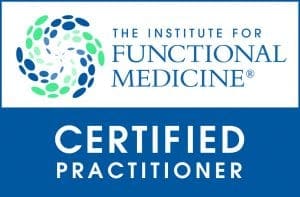Table of Contents
Introduction
Dr. Jimenez, D.C., presents how chronic metabolic connections like inflammation and insulin resistance are causing a chain reaction in the body in this 2-part series. Many factors often play a role in our health and wellness. In today’s presentation, we will continue on how these chronic metabolic diseases affect the vital organs and organ systems. It can lead to overlapping risk factors associated with pain-like symptoms in the muscles, joints, and vital organs. Part 1 examined how overlapping risk profiles like insulin resistance and inflammation affect the body and cause muscle and joints pain-like symptoms. We mention our patients to certified medical providers that provide available therapy treatments for individuals suffering from chronic conditions associated with metabolic connections. We encourage each patient when it is appropriate by referring them to associated medical providers based on their diagnosis or needs. We understand and accept that education is a marvelous way when asking our providers’ crucial questions at the patient’s request and acknowledgment. Dr. Alex Jimenez, D.C., uses this information as an educational service. Disclaimer
How The Liver Associated With Metabolic Diseases
So we can look to the liver to find earlier cues of cardiovascular risk. How can we do that? Well, let’s understand some liver biochemistry. So in a healthy liver cell hepatocyte, when you have increased insulin being secreted because there was a meal that required glucose to be absorbed, what you expect if the insulin receptor works is that the glucose would go in. Then the glucose would get oxidized and turned into energy. But here’s the problem. When the hepatocyte has insulin receptors that don’t work, you’ve got that insulin on the outside, and the glucose never made it in. But what also happens on the inside of the hepatocyte is it was assumed that the glucose was going to get in. So what it does is it turns off fatty acid oxidation, thinking, “Guys, we don’t need to burn our fatty acids. We’ve got some glucose coming in.”
So when the glucose is not there, and you’re not burning off fatty acids, very common for people to feel fatigued because nothing is burning for energy. But here is the secondary sequela; where are all those fatty acids going, right? Well, the liver may try to repackage them as triglycerides. Sometimes, they stay in the hepatocyte or get shifted out of the liver into the bloodstream as VLDL or very low-density lipoprotein. You might see it as a high triglyceride shift in a standard lipid panel. So, when all of us are talking about getting a triglyceride level to around 70 as your 8+ goal, when I start seeing triglycerides rising, we wait until they’re 150, even though that’s the cutoff for our labs. When we see it at 150, we know they are shunting triglycerides out of the liver.
So that will happen many times before we find impaired fasting glucose. So look at your triglycerides, fasting triglycerides, as an emerging or early biomarker of insulin dysfunction. So this is another diagram that says that if the triglycerides are being created because the fatty acids are being oxidized, they can stay in the liver. Then that makes steatosis or the fatty liver, or they can be pushed out, and they turn into lipoproteins. We’re going to talk about that in just a second. The body is like, “What are we going to do with these fatty acids?” We can’t try to shove them into places because nobody wants them. To that point, the liver is like, “I don’t want them, but I will keep some with me.” Or the liver would have these fatty acids transported and stuck to the blood vessel walls.
And then the blood vessels and arteries are like, “Well, I don’t want them; I’ll put them underneath my endothelium.” And so that’s how you get atherogenesis. The muscles are like, “I don’t want them, but I’ll take some.” That’s how you get the fatty streaks in your muscles. So when the liver is getting bogged down with steatosis, inflammation occurs in the body and produces this feed-forward cycle inside the hepatocyte, damaging the liver. You’re getting cellular death; you’re getting fibrosis, which is just an extension of what happens when we don’t address the core issues for fatty liver: inflammation and insulin resistance. So, we look for subtle rises in AST, ALT, and GGT; remember that it is a liver-based enzyme.
Hormone Enzymes & Inflammation
GGT enzymes in the liver are smoke detectors and tell us how much oxidative stress is going on. Will we look at HSCRP and APOB to see the output of this liver? Is it starting to dump excess fatty acids through VLDL, APOB, or triglycerides? And how it picks that is just genetics, honestly. So I look for liver markers to tell me what’s going on in the liver as a sign of what’s happening everywhere. Because that might be the genetic weak spot of the person, some people are genetically vulnerable just in terms of their lipid profiles. To that point, we can look for something called metabolic dyslipidemia. You know this as high triglycerides and low HDL. You can specifically look for a ratio; an optimal balance is three and lower. It starts going from three to five and then five to eight, like eight is almost pathognomonic of insulin resistance. You’re just reaching becoming more and more insulin resistant.
As the number increases for that trig over HDL ratio, that is a simple, easy way to screen for insulin resistance. Now some people look 3.0 on this but still have insulin resistance. So there are other tests you do. This is a way to find those who show insulin resistance through lipids. And remember, everybody is different. Women with PCOS could have amazing lipids but could express an increase or decrease of hormones associated with insulin, estrogen, and inflammation. So look for something other than one test or ratio to indicate whether they’ve got it. You’re looking to see what could be the place where we will find the clue.
So let’s use the word healthy. A healthy person has VLDL that looks to be a healthy normal size in their bodies, and they have normal LDL and HDL. But now look at what happens when you get insulin resistance. These VLDL ls start to pump up with triglycerides. That’s why they’re fattening up. It’s lipotoxicity. So if you start looking at the VLDL three numbers in a lipoprotein profile, you’ll see that that number is creeping up, and there are more of them, and their size is bigger. Now with LDL, what happens is that the cholesterol amount within the top and the bottom is the same. If I pop all these water balloons, it’s the same amount of LDL cholesterol. However, that amount of LDL cholesterol in insulin resistance is repackaged in small dense LDL.
How Does Functional Medicine Play Its Part?
Now we understand that there may be some of you who cannot or do not have access to this testing, or your patients cannot afford it, and that’s why we answered the questions and looked for other clues of insulin resistance and treat the root cause that is affecting the body. Look for signs of inflammation and other overlapping profiles of insulin resistance. The particle number is higher when they’re insulin resistance. So cholesterol is the same, whereas the particle number is more elevated, and small dense LDL is more atherogenic. Treat it because whether or not you have access to knowing the LDL particle, there should be something in your head that says, “Man, even though this person’s LDL cholesterol looks good, they have tons of inflammation and insulin resistance; I can’t be sure that they don’t have higher particle number.” You might assume that they do this just to be safe.
The other thing that happens in insulin resistance is that the HDL or the healthy cholesterol tends to become small. So that’s not very good because the efflux capacity of HDL is lessened when it’s smaller. So we like the larger HDL, if you will. Access to these tests would give you a solid indication of what’s going on with your patient from a cardiometabolic perspective.
When it comes to these tests, it is important to utilize them to determine the patient’s timeline when they have inflammation or insulin resistance in their bodies, affecting their quality of life. However, many people would often express that these tests are expensive and would go with the gold standard of testing for affordability and be able to decide if it is worth it to better their health and wellness.
Look For Cardiometabolic Risk Patterns
So when it comes to cardiometabolic risk factor patterns, we look at the insulin aspect and how it correlates with mitochondrial dysfunction associated with insulin resistance and inflammation. A research article mentions how two mitochondrial dysfunctions can affect the body. Okay, let’s talk about the first issue, which is the quantity issue. One could be endotoxins that we encounter in our environment, or two; it can be genetically passed along from generation to generation. So the two types could indicate that you don’t have enough mitochondria. So that’s a quantity issue. The other problem is it’s a quality issue. You got plenty of them; they don’t work well, so they don’t have high output or at least normal results. Now how does this play out in the body? So out in the periphery, your muscles, adipocytes, and liver, you have mitochondria in those cells, and it’s their job to energize that lock and jiggle. So if your mitochondria are in the right number, you’ve got plenty to energize the insulin cascade lock and jiggle.
Interesting, right? So here it is in summary, if you don’t have enough mitochondria, which is the problem in the periphery, you get insulin resistance because the lock and jiggle aren’t working well. But if you do not have the mitochondria working well in the pancreas, especially in the beta cell, you don’t secrete insulin. So you still get hyperglycemia; you don’t have high insulin state. When this happens, we know your brain should be hurting, but hopefully, it will come together slowly.
Another article mentions that it connects mitochondrial dysfunction with type two diabetes, and poor maternal nutrition can prime it. This one talks about how fatty liver is associated with lipotoxicity, right? That’s that increased fatty acid, and oxidative stress, which, remember, is the byproduct of inflammation. ATP depletion and mitochondrial dysfunction. When this happens, it can affect the liver, which then turns into the fatty liver, and can also be associated with gut dysfunction, which leads to chronic inflammation, elevated insulin resistance, mitochondrial dysfunction, and many more. These chronic metabolic diseases are connected, and there are ways to reduce these symptoms from affecting the body.
Conclusion
When having a conversation with their doctors, many patients know that the same drivers affect a whole host of other phenotypes, all commonly rooted in inflammation, insulin, and toxicity. So when many people realize these factors are the root cause, doctors will work with many associated medical providers to develop personalized functional treatment plans. So remember, you always have to use the timeline and the matrix to kind of help you know where do you start with this patient, and for some people, it might be you’re just going to tweak a little bit of lifestyle because all they’re working on is changing their body count. So it’s one of the blessings of functional medicine that we were able to turn off the inflammation in the gut, which helps reduce the toxic impact burdening the liver. It also allows the individual to find out what works or doesn’t work with their bodies and take these small steps to improve their health.
We hope you have fresh eyes about inflammation, insulin, and toxicity and how it is at the root of so many conditions that your patients are facing. And how through very simple and effective lifestyle and nutraceutical interventions, you can change that signaling and change the course of their symptoms today and the risks they have tomorrow.
Disclaimer
General Disclaimer
Professional Scope of Practice *
The information herein on "Understanding The Metabolic Connection & Chronic Diseases (Part 2)" is not intended to replace a one-on-one relationship with a qualified health care professional or licensed physician and is not medical advice. We encourage you to make healthcare decisions based on your research and partnership with a qualified healthcare professional.
Blog Information & Scope Discussions
Welcome to El Paso's Premier Wellness and Injury Care Clinic wellness blog, where Dr. Alex Jimenez, DC, FNP-C, a board-certified Family Practice Nurse Practitioner (FNP-C) and Chiropractor (DC), presents insights on how our team is dedicated to holistic healing and personalized care. Our practice aligns with evidence-based treatment protocols inspired by integrative medicine principles, similar to those found on dralexjimenez.com, focusing on restoring health naturally for patients of all ages.
Welcome to El Paso's Premier Wellness and Injury Care Clinic & wellness blog, where Dr. Alex Jimenez, DC, FNP-C, a board-certified Family Practice Nurse Practitioner (FNP-C) and Chiropractor (DC), presents insights on how our team is dedicated to holistic healing and personalized care. Our practice aligns with evidence-based treatment protocols inspired by integrative medicine principles, similar to those found on dralexjimenez.com, focusing on restoring health naturally for patients of all ages.
Our areas of chiropractic practice include Wellness & Nutrition, Chronic Pain, Personal Injury, Auto Accident Care, Work Injuries, Back Injury, Low Back Pain, Neck Pain, Migraine Headaches, Sports Injuries, Severe Sciatica, Scoliosis, Complex Herniated Discs, Fibromyalgia, Chronic Pain, Complex Injuries, Stress Management, Functional Medicine Treatments, and in-scope care protocols.
Our information scope is limited to chiropractic, musculoskeletal, physical medicine, wellness, contributing etiological viscerosomatic disturbances within clinical presentations, associated somato-visceral reflex clinical dynamics, subluxation complexes, sensitive health issues, and functional medicine articles, topics, and discussions.
We provide and present clinical collaboration with specialists from various disciplines. Each specialist is governed by their professional scope of practice and their jurisdiction of licensure. We use functional health & wellness protocols to treat and support care for the injuries or disorders of the musculoskeletal system.
Our videos, posts, topics, subjects, and insights cover clinical matters, issues, and topics that relate to and directly or indirectly support our clinical scope of practice.*
Our office has reasonably attempted to provide supportive citations and has identified the relevant research studies or studies supporting our posts. We provide copies of supporting research studies available to regulatory boards and the public upon request.
We understand that we cover matters that require an additional explanation of how they may assist in a particular care plan or treatment protocol; therefore, to discuss the subject matter above further, please feel free to ask Dr. Alex Jimenez, DC, APRN, FNP-BC, or contact us at 915-850-0900.
We are here to help you and your family.
Blessings
Dr. Alex Jimenez DC, MSACP, APRN, FNP-BC*, CCST, IFMCP, CFMP, ATN
email: coach@elpasofunctionalmedicine.com
Licensed as a Doctor of Chiropractic (DC) in Texas & New Mexico*
Texas DC License # TX5807
New Mexico DC License # NM-DC2182
Licensed as a Registered Nurse (RN*) in Texas & Multistate
Texas RN License # 1191402
ANCC FNP-BC: Board Certified Nurse Practitioner*
Compact Status: Multi-State License: Authorized to Practice in 40 States*
Graduate with Honors: ICHS: MSN-FNP (Family Nurse Practitioner Program)
Degree Granted. Master's in Family Practice MSN Diploma (Cum Laude)
Dr. Alex Jimenez, DC, APRN, FNP-BC*, CFMP, IFMCP, ATN, CCST
My Digital Business Card




















